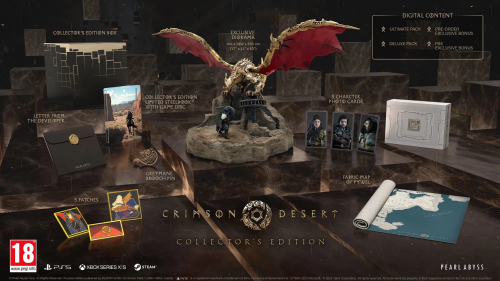Všechny aktivity
- Dnes
-
Grow a Garden has captured the imagination of players worldwide with its deceptively simple mechanics, adorable pets, and the thrill of building the ultimate garden. While most gameplay revolves around careful planning, breeding, and crafting, there exists a fascinating niche of players exploring the limits of the game. Specifically, there are seven pets in Roblox Grow a Garden Items that can completely break the game's rules—and understanding how to use them effectively can transform your garden into a powerhouse of productivity. In this article, we’ll dive into these seven pets, how they break the game, and the strategies you need to maximize their effects. Whether you're a casual player curious about the mechanics or a hardcore gamer aiming to dominate your garden, this guide will provide all the insights you need. 1. Seal: The Most Game-Breaking Pet Let’s start with the seal, widely regarded as the most game-breaking pet in Grow a Garden. The seal has an extraordinary ability: it can take any pet in your garden and revert it back into an egg, permanently increasing the number of eggs in your inventory. This mechanic allows for almost limitless possibilities—if you have enough resources, you can buy other players' pets, convert them to eggs, and attempt to hatch rare or high-value pets repeatedly. How to Maximize Seals The effectiveness of seals depends on their weight and age. Historically, each seal could provide up to an 8% boost, and with eight pets in your garden, this translated to a 64% chance for maximum effect. After a recent nerf, this cap is now 50%, meaning each seal contributes 6.25%. To reach the 50% cap, you need eight seals weighing at least 1.71 kilograms at age one. If you have heavier seals, you might need fewer, or you could reach the cap at a younger age. By focusing on seals of this weight, you can reliably achieve maximum effect without excessive effort. In short, the seal is straightforward to manage, and anyone can integrate it into their garden strategy with minimal hassle. 2. Koi: Challenging but Rewarding Next, we have the koi, which is far more difficult to maximize than the seal but can be equally rewarding. The koi’s unique ability is that it increases the odds of free eggs appearing whenever you hatch an egg. Essentially, every koi on the field has a chance to generate an additional egg for free—a mechanic that can dramatically accelerate growth in your garden. Requirements for Maximum Effect To hit the 50% cap with koi, you need: Eight koi, all rainbow variants. Minimum weight at age one: 1.21 kilograms. Given that the maximum achievable weight is only around 1.32 kilograms, finding koi that meet these criteria is challenging. These requirements place koi in the top percentile of pet weights, making them rare and valuable. Despite the difficulty, the effect is astonishing: half of your eggs stay on the field after hatching, offering incredible growth potential. If you can obtain the necessary koi, your garden’s egg production will skyrocket. 3. Squirrel: Easy Infinite Reclaimers The squirrel is arguably one of the easiest pets to use for game-breaking effects. Its ability provides infinite reclaimers, which are essential for managing large gardens. For example, if you flood your garden with hundreds of plants, reclaimers allow you to clear space efficiently without losing precious resources. Optimizing Squirrels To maximize squirrels, you need: Eight squirrels. Minimum weight at age one: 0.84 kilograms. Because 0.84 kg is relatively easy to achieve, you don’t need to stress about obtaining perfect squirrels. Even average squirrels tend to reach the desired percentage well before age 100, making this pet accessible to most players. With squirrels, clearing hundreds of plants becomes trivial, allowing you to maintain a massive, organized garden. 4. Barn Owl: Increasing Pet Weight in Shops The barn owl has a more subtle but highly strategic effect: it increases the weight of pets purchased from shops. Each barn owl can add up to 0.4 kilograms, and when combined, they can provide a total increase of 3 kilograms. This can mean the difference between a mediocre pet and a truly powerful one. How to Maximize Barn Owls To hit the weight cap at age 100, your barn owls need to weigh at least 1.08 kilograms at age one. Fortunately, finding barn owls above this weight is relatively easy, especially since premium egg variants can offer even higher starting weights. While not as dramatic as seals or koi, barn owls allow for strategic optimization of new pets, giving your garden a strong foundation for future expansion. 5. Brontosaurus: Increasing Egg Hatch Weight While barn owls affect shop pets, the brontosaurus increases the weight of pets hatching from eggs. However, the brontosaurus conflicts with koi because both require eight slots in your garden. Players must decide whether to maximize egg quantity (koi) or egg quality (brontosaurus). Strategies for Brontosaurus Four regular brontosauruses of at least 1.73 kg at age one reach the 30% cap by age 100. Three brontosauruses (for more koi) require 4.3 kg at age one. Two rainbow brontosauruses require a massive 8.2 kg at age one to reach the cap. This trade-off creates an interesting strategic decision for players: optimize for heavier pets or more eggs. Combining brontosauruses and koi allows for a balanced approach, maximizing both quality and quantity. 6. Pachyphilosaurus: Doubling Crafts The pachyphilosaurus is perhaps one of the most niche but powerful pets for crafting. Its ability allows you to double the output of crafting recipes, effectively giving two items for the price of one. This can be especially useful for rare eggs or items that require significant resources to craft. Maximizing Pachyphilosaurus For 100% double craft chance, you need: Eight pachyphilosauruses. Minimum weight at age one: 2.17 kg (without rainbow variants). If using rainbow variants, minimum weight reduces to 1.77 kg. Trading for heavier pachyphilosauruses or using rainbow variants can make achieving this effect much easier. While not always practical, the crafting efficiency they provide is game-changing for dedicated players. 7. Chipmunk: Infinite Harvest Tools Finally, we have the chipmunk, which allows infinite use of harvest tools. While this is the least impactful of the game-breaking pets, it still has strategic value, particularly for players with large-scale gardens. Challenges with Chipmunks Must be rainbow and 2.12 kg at age one. Originally a store pet, making these hard to acquire. Using barn owls to hatch heavier chipmunks can help meet the required weight, but the effort may outweigh the benefits for most players. Nevertheless, for those seeking total efficiency, chipmunks offer a neat utility boost. Maximizing Your Garden: Strategies and Trade-Offs Breaking the game in Grow a Garden is not merely about collecting pets—it’s about strategic placement, weight management, and age optimization. Players must decide how to balance their garden: Egg production vs. pet weight: Koi increase egg numbers, while brontosauruses increase pet size. Crafting efficiency: Pachyphilosauruses can double outputs, saving resources for more critical tasks. Resource management: Squirrels and chipmunks provide tools for handling large gardens efficiently. By carefully considering these trade-offs, you can design a garden optimized for maximum output, whether your goal is wealth, rare pets, or efficiency. Conclusion Grow a Garden is more than just a charming simulation—it’s a playground for creativity, strategy, and mastery. The seven game-breaking pets—seal, koi, squirrel, barn owl, brontosaurus, pachyphilosaurus, and chipmunk—offer players unique opportunities to push the game beyond its intended limits. Understanding weight, age, and placement is crucial to unlocking their potential buy Roblox Grow a Garden Items. Some pets, like seals and squirrels, are easy to integrate, providing immediate benefits. Others, like rainbow koi or titanic brontosauruses, require dedication and precise strategy, rewarding players willing to invest the time and effort. Ultimately, mastering these pets transforms Grow a Garden from a simple simulation into a complex, rewarding strategy game, where careful planning and knowledge of pet mechanics can lead to a truly unstoppable garden. Whether you’re chasing rare eggs, maximizing crafting efficiency, or simply building the garden of your dreams, these seven pets are your key to breaking the game in the most delightful and rewarding ways possible.
-
Welcome back, Exiles. The Path of Exile 2 (POE 2 Chaos Orbs) community has been buzzing lately with a fascinating debate: is PoE2 slowly turning into “Path of Exile 1.5”? What began as a conversation about balance and identity has evolved into a larger discussion about what Grinding Gear Games (GGG) is trying to achieve with its long-awaited sequel. For many, PoE2 was expected to be a radical evolution — a new game with a new identity — but as the months go on, it's becoming clear that GGG's vision is shifting back toward the formula that made Path of Exile 1 so beloved in the first place. And you know what? That might actually be the best thing that could happen. A Strong Start, a Predictable Drop, and a Promising Recovery We're now several weeks into PoE2's latest league, and the numbers tell an interesting story. While an initial drop-off in player counts was inevitable — as it always is in ARPGs — the overall retention rate is remarkably strong. Steam charts show a 24-hour peak of around 70,000 players and roughly 40,000 concurrent users, even this deep into the league cycle. That's not just “good” — that's exceptional for a game that's still in development and hasn't even reached its 1.0 launch. Patch 0.3 and the more recent 0.3.1 update seem to have turned the tide. After a rocky 0.1 and 0.2, where many fans were left questioning the game's direction, GGG's latest updates have restored much of the community's confidence. The introduction of Abyss crafting, boss reworks, and major endgame adjustments have made the game more fun and more rewarding. Player retention data shows it clearly: the drop-off rate in PoE2 is around 20.6%, compared to over 60% in earlier patches. That's a dramatic improvement, and much of it can be attributed to the game's growing resemblance to the systems and philosophies of PoE1 — the same foundation that built one of the most successful ARPGs of all time. The “Path of Exile 1.5” Argument: A Community Divided Here's where things get interesting. Many players have noticed that PoE2 is gradually adopting more of PoE1's DNA — from mapping systems and ascendancy balance to boss design and itemization philosophy. What was initially envisioned as a “new generation” ARPG is, patch by patch, morphing into what some are calling Path of Exile 1.5. At first glance, that might sound like a bad thing. But when you consider the state of ARPGs today, it's arguably a necessary evolution. GGG initially tried to reinvent the wheel with PoE2 — focusing on slower, more methodical combat, a reworked endgame progression, and a campaign that leaned into realism and pacing over power fantasy. While noble in concept, it simply didn't feel like Path of Exile. Players missed the chaos, the speed, the feeling of unstoppable progression. So GGG pivoted. The 0.3 series of patches marks a clear design philosophy shift: instead of distancing PoE2 from its predecessor, GGG is embracing what made PoE1 special. Faster gameplay. More flexible builds. Complex crafting. Meaningful loot explosions. In other words, the soul of Path of Exile. And the community seems to agree. In a recent poll with over a thousand votes, 61% of players said they were happy with the current direction, while only 6% were outright negative. About 20% expressed long-term concern, and the remaining 14% didn't care either way. That's an overwhelming show of support for what many once feared — that PoE2 would become too similar to PoE1. Patch 0.3.1: A Turning Point The latest patch deserves special mention. Update 0.3.1 tackled one of the game's biggest problems: its lack of identity. Previously, PoE2 struggled to decide whether it wanted to be a “gritty, deliberate” ARPG like Dark Souls or a “power-crazed build lab” like PoE1. Now, it's finding a healthy middle ground. Bosses have received significant buffs to health and mechanics, maps now include bosses in every instance (eliminating backtracking), and loot drops feel more satisfying and plentiful. The new Abyss crafting system has also revitalized item progression, giving players more control over their gear without removing the thrill of RNG. The only major criticism left is the state of Uber bosses — currently too easy relative to the regular map bosses. But that's a good problem to have. GGG now has the foundation to make meaningful tweaks without breaking the entire system, something that was nearly impossible in earlier patches. In short, 0.3.1 feels like the patch where PoE2 finally “clicked.” The game feels good to play, it's stable (crashes aside), and the loop of combat, loot, and build crafting finally feels like classic Path of Exile again. Why Returning to PoE1's Roots Makes Sense Critics of PoE2's “backward pivot” argue that it's betraying its original vision — that by making it more like PoE1, GGG is stifling innovation. But that view ignores the lessons of history. Path of Exile 1 was not an overnight success. It evolved over a decade of experimentation, iteration, and feedback. The Atlas system, ascendancies, and endgame mapping were all ideas that took years to perfect. PoE2 was trying to leapfrog that entire process by reinventing the formula from scratch — and in doing so, it risked losing what made the franchise special. Now, GGG is doing what smart developers do: they're building on what works. The current structure — with precursor tablets, revamped bossing, and a hybrid endgame loop — is reminiscent of PoE1's Atlas but with modern improvements. It's familiar enough to feel like home, but different enough to feel fresh. This isn't regression. It's refinement. The Future of Mapping and Endgame Endgame mapping in PoE2 has become far more rewarding, with every map guaranteed to feature a boss encounter. It may seem like a small change, but it eliminates wasted time and reinforces a core ARPG principle: every run should feel like progress. The precursor tablet system — a kind of modular map modifier similar to scarabs in PoE1 — is also a massive step forward. Players can now customize the kind of encounters and loot they want without relying solely on RNG. It's a system that encourages experimentation and player agency, two of PoE's strongest pillars. There's also a growing sense that GGG is laying the groundwork for returning league mechanics from PoE1. Abyss has already been reworked beautifully, and there are strong hints that Delve, Blight, and Heist will eventually return in reimagined forms. This is exactly what fans have been hoping for: a future where PoE2 inherits the content depth of PoE1 while refining its systems for a new generation. The Case for Longevity Path of Exile 1 has been running for over 12 years — an incredible feat in gaming longevity. PoE2, if handled correctly, could easily carry the franchise another decade or more. It's unlikely that we'll see a full 1.0 launch before late 2026, given the amount of polishing and content still in development. But that's not a bad thing. GGG has proven with PoE1 that slow, deliberate growth leads to sustainable success. As long as the team continues delivering meaningful updates at the pace of 0.3 and 0.3.1, the player base will remain engaged. Moreover, GGG has clearly figured out its workflow. The announcement of PoE1's 3.27 patch shows that both games can coexist without one starving the other. That's vital for ensuring PoE2's long-term health while still honoring the legacy of its predecessor. Why the Community Needs to Relax Some players remain anxious about PoE2's trajectory — fearing that it's losing its individuality or becoming a “re-skinned PoE1.” But the reality is far more nuanced. PoE2 is different. Its combat pacing, visual fidelity, class design, and campaign structure are all major upgrades. What it shares with PoE1 are its core values: build freedom, mechanical depth, and long-term replayability. Those aren't things to shy away from — they're the reasons millions of players fell in love with the franchise in the first place. Besides, the developers themselves are gamers. They've played both games extensively and have admitted that some of their earlier design choices simply weren't fun. Their decision to steer PoE2 closer to PoE1's design isn't a capitulation — it's an acknowledgment that fun should always come first. The Road Ahead Looking forward, the next few patches will be crucial. Expect Uber bosses to be scaled up, additional endgame content to be introduced, and more systems like Delve and Heist to be integrated. Crafting will also continue to evolve — perhaps even bringing back a version of the beloved crafting bench for accessibility. The game still has rough edges: performance issues, overly generous ascendancy progression, and a few redundant systems like the tower mechanic. But these are fixable problems. What matters most is that PoE2 now has a clear identity and a stable foundation to build upon. When the game finally hits its 1.0 milestone, it won't be remembered as “the failed sequel that tried to be different.” It'll be remembered as the natural successor — the bridge between a legendary game and its future. Final Thoughts So, is Path of Exile 2 becoming “Path of Exile 1.5”? Yes — and that's exactly why it's succeeding. GGG has realized that the best version of PoE2 is not one that abandons its roots, but one that embraces them while improving upon them. The current state of the game — balanced, diverse, and genuinely fun — proves that the studio's course correction was the right move buy POE 2 Chaos Orbs. PoE2 may have started as an experiment in reinvention, but it's maturing into something even more meaningful: a celebration of everything that made Path of Exile great in the first place. For those still skeptical, here's the truth: Path of Exile 2 isn't a downgrade. It's evolution through refinement — and if this trajectory continues, the eventual 1.0 release will not only surpass PoE1 but cement GGG's legacy as the masters of the ARPG genre. Until then, keep farming, keep crafting, and remember — Exile, you were never meant to stop at the first act. The best is yet to come.
-
Diablo IV’s Season 10 has been a major turning point for the game—one filled with new mechanics, deeper seasonal content, and fresh systems that challenge even the most veteran of Nephalem. Yet among the many additions introduced this season, none have sparked as much controversy as the new Soulspires. While the mechanic promised a high-risk, high-reward layer of endgame combat, its current execution has left many players frustrated and Diablo 4 Gold. The problem isn’t that Soulspires are uninteresting—far from it. The concept of stationary beacons that empower players in battle while spawning additional monster ambushes could have been a thrilling twist to Diablo IV’s flow. The issue lies in the way these mechanics interact with player movement, build diversity, and the fundamental pacing of the game. For builds that thrive on mobility or ranged combat, Soulspires have become more of a burden than a boon. To understand why this mechanic is so divisive, and how Blizzard can redeem it, we need to unpack what makes Soulspires both promising and problematic. The Soulspire Concept — A Good Idea in Theory At its core, the Soulspire mechanic was designed to encourage players to fight in specific zones rather than kiting enemies endlessly across the map. Once activated, these eerie spires emit a field of energy that enhances both rewards and combat intensity. Players who remain within the Soulspire’s radius gain access to greater loot potential and faster progression, but at the cost of being locked into a smaller combat area. The idea was simple: trade mobility for power. Stay close to the spire, fight within its influence, and be rewarded with higher efficiency and drop chances. However, this design conflicts with a fundamental truth about Diablo IV’s combat rhythm—most builds are designed to move constantly. Whether it’s to dodge ground effects, reposition against elite affixes, or maintain uptime for cooldown rotations, continuous movement is a core feature of high-level play. Restricting that freedom effectively punishes players for playing their builds correctly. The Mobility Problem The most vocal criticism from the community revolves around how Soulspires restrict mobility. While the radius was expanded in update 2.4.1, the change hasn’t fully solved the issue. The spires still encourage a stationary style of combat that feels antithetical to Diablo IV’s design philosophy. For example, builds like the Ball Lightning Sorcerer excel by maintaining constant motion, using movement to reposition and maximize the area of effect from spinning orbs. The build’s power scales dramatically with spacing—keeping enemies grouped tightly while the player moves around them. However, when forced to fight within a confined Soulspire radius, the Sorcerer loses both maneuverability and defensive flexibility. Ranged builds face an even steeper challenge. Whether it’s the Penetrating Shot Rogue or Bone Spear Necromancer, ranged archetypes rely on distance to survive. When Soulspires demand that players stay close to both the beacon and their enemies, the result is a frustrating tug-of-war between survival and efficiency. Step too far from the Soulspire and you lose its bonuses; stay too close and you risk instant death from elite attacks. This problem is compounded by the fact that monster ambushes can now spawn directly around the Soulspire. While this adds excitement and unpredictability, it disproportionately punishes fragile builds that rely on spacing and tactical retreat. Why Some Builds Thrive While Others Struggle The controversy becomes more apparent when comparing how different playstyles interact with Soulspires. Melee builds, such as Barbarian Rend or Twisting Blades Rogue, actually benefit from Soulspires. Their natural close-range aggression fits neatly into the confined space. They can leverage the bonus rewards without altering their playstyle significantly. Hybrid builds, like Werewolf Druid or Shadow Necromancer, find a middle ground—they can adapt to close-range combat when needed, though they sacrifice efficiency to stay within the Soulspire’s influence. Ranged and mobility builds, however, face major penalties. For them, Soulspires fundamentally break the pacing and positional logic that their builds rely on. The mechanic transforms from an opportunity for higher rewards into an artificial constraint that limits creative play. This imbalance is at the heart of the controversy. Players don’t mind challenge—Diablo IV’s community thrives on pushing boundaries—but when a mechanic feels like it favors certain archetypes by design, frustration is inevitable. Patch 2.4.1: A Step in the Right Direction Blizzard’s 2.4.1 update attempted to address these issues by expanding the Soulspire radius and adding monster ambushes for a more dynamic feel. The changes are appreciated—they show that the developers are listening—but they stop short of solving the core design flaws. The expanded radius offers a little more breathing room, but the fundamental problem remains: players are still tethered to a fixed point. The addition of ambushes increases tension, yet it also amplifies the chaos for fragile builds. For many players, these changes make the experience more stressful rather than more rewarding. Still, 2.4.1 proves that Blizzard is open to iteration. Season 10 is not set in stone, and there’s still room to reshape Soulspires into a mechanic that unites the community rather than divides it. How Blizzard Can Redeem Soulspires There are several ways Blizzard can fine-tune the system to make Soulspires more inclusive, strategic, and fun for all playstyles. 1. Make Soulspires Dynamic Instead of Static One of the biggest frustrations with the current system is its rigidity. If Soulspires could follow the player’s position or re-anchor after a certain duration, it would open up much more flexibility. For example, allowing the Soulspire to relocate after 10 seconds of inactivity would let players reposition without losing progress. Alternatively, Blizzard could make the Soulspire’s radius expand dynamically as players maintain uptime near it—rewarding both aggression and sustained presence, but without locking players in one place. 2. Introduce Soulspires that Scale with Build Type Diablo IV’s build diversity is one of its greatest strengths, so the Soulspire system should reflect that. Imagine if certain Soulspires offered bonuses tailored to different archetypes: Ranged Soulspire: Increases damage the farther you are from the center. Melee Soulspire: Boosts armor, healing, and attack speed within close range. Caster Soulspire: Rewards spell uptime and mana regeneration based on stationary time. This would not only improve balance but also encourage experimentation—allowing every class to find a Soulspire that fits their natural rhythm. 3. Turn Ambushes into Opportunities Right now, ambushes feel like punishment. But with slight adjustments, they could become strategic opportunities. Imagine if defeating ambush waves charged up the Soulspire, unlocking temporary buffs or even a short burst of mobility freedom. This would turn a dangerous event into an empowering moment, aligning risk with meaningful reward. 4. Improve Visual and Audio Feedback Part of the problem is that players don’t always realize when they’ve drifted out of range or when an ambush is about to occur. More distinct visual indicators, such as pulsating ground effects or growing shadows before a spawn, could make Soulspires easier to read and more engaging to interact with. A simple addition like an expanding energy pulse to signal when you’re gaining or losing the buff could go a long way toward reducing frustration. 5. Make Soulspires Optional but Rewarding Instead of forcing Soulspires into the flow of every dungeon or event, Blizzard could make them optional challenges—risk zones that players can choose to activate for greater rewards. This would preserve player agency while keeping the mechanic meaningful. Opt-in challenge systems have always thrived in ARPGs because they let players set their own limits. The Potential for Redemption Despite the current backlash, Soulspires still hold immense potential. The idea of environmental anchors that shape combat zones is compelling—it just needs refinement. If Blizzard can find the right balance between mobility, risk, and reward, Soulspires could evolve into one of Diablo IV’s most beloved mechanics. In many ways, this controversy mirrors the game’s broader journey. Diablo IV has always been about experimentation: testing bold ideas, learning from feedback, and fine-tuning the balance between chaos and control. Season 10’s Soulspire experiment, while flawed, represents a necessary step in that process. Community Adaptation and Future Outlook Interestingly, not all players are abandoning Soulspires. Some in the community have already developed creative solutions—hybridizing builds to exploit the mechanic’s limitations. For example, Ball Lightning Sorcerers have started incorporating Defensive Aspect of Control and Raiment of the Infinite to better handle close-range combat within the Soulspire’s radius. Rogues, meanwhile, are experimenting with Smoke Grenade and Dark Shroud synergy to survive sudden ambushes. This kind of player ingenuity is what keeps Diablo IV alive. Even when the system feels unbalanced, the community’s adaptability proves that the game’s foundation is strong. It’s now up to Blizzard to meet that creativity halfway. Final Thoughts The controversy around Soulspires in Diablo IV Season 10 highlights a recurring tension in live-service ARPGs: the clash between design intent and real-world player experience. On paper, Soulspires are an exciting addition that bring danger and intensity to the battlefield. In practice, their limited range and static nature have alienated entire categories of builds. But it doesn’t have to stay that way. With thoughtful adjustments—dynamic range, build-based scaling, opt-in rewards—Soulspires can evolve from a divisive mechanic into a defining feature of Diablo IV’s endgame. If Blizzard continues listening to player feedback and refining its systems, Season 10 could ultimately be remembered not for its controversy, but for how it reshaped Diablo IV into a more balanced, cheap Diablo 4 Gold, and exhilarating experience. The firestorm around Soulspires is a challenge—but it’s also an opportunity. And if there’s one thing the Diablo franchise has always excelled at, it’s turning darkness into strength.
- Včera
-
Are Xbox Game Cards still the right solution for you? These cards make purchasing games, DLCs and subscriptions easy without sharing payment info - making them great gifts or budgeting tools! Do you still utilize Xbox Game Cards in your gaming life?
-
HenryLucas se přidal do komunity
-
Ahoj, sháním tyto dvě hry v primáru.: Dying Light: The Beast Ghost of Yotei ? diky
-
Hi everyone, I wanted to share my experience and gather your insights around sending flowers to Pakistan, especially via Express Gift Service. Why I Chose Express Gift Service I recently discovered the “Send Flowers to Pakistan” category on Express Gift Service and was impressed by what they offer. They advertise same-day delivery (in major cities) and a wide variety of floral arrangements paired with gifts. Since many global floral delivery services struggle with reliability in Pakistan, this local focus was attractive to me. They’ve been operating since 2005 and also offer international gifting services so you can order from abroad and have flowers sent to Pakistan.
-
Express Gift Service se přidal do komunity
-
Chlubírna - aneb "dnešní pošta"
téma přidal příspěvek do miz012 Maram45 v Sběratelé - Novinky a pokec o hrách
Jakoze zasilkovna zamenila baliky? To se mi stalo posledne s obj z CZC... a nikdo za nic nemuze a neresi. Od te doby zasilkovnu ignoruju. -
Předobjednávky - kde a za kolik co nejlépe a nejrychleji objednat
téma přidal příspěvek do miz012 Martinoslav v Rady a tipy pro sběratele
Ja mam na alze cenu 7012 Kc... kdybyste nekdo chteli -

Chlubírna - aneb "dnešní pošta"
téma přidal příspěvek do mirai_trunks Maram45 v Sběratelé - Novinky a pokec o hrách
No, vyzv3el jsem to a myslim, ze je to Vinted zasilka. zadna faktura nic jen triko v pytliku. -

Chlubírna - aneb "dnešní pošta"
téma přidal příspěvek do Crashíčeq Maram45 v Sběratelé - Novinky a pokec o hrách
Jestli je to tricko Gucci, tak by ti za to na Vinted nekdo mohl stovku s postou dat. -

Předobjednávky - kde a za kolik co nejlépe a nejrychleji objednat
téma přidal příspěvek do Akumazensho Martinoslav v Rady a tipy pro sběratele
Na Alze se objevila sberatelka Crimson Desert za 7599Kc: https://www.alza.cz/gaming/crimson-desert-collectors-edition-ps5-d13109938.htm Oproti deluxe obsahuje velkou figurku draka, latkovou mapu a jiny steelbook. - Poslední týden
-
sekundár Dying Light: The Beast (PS5/PRO) cena 700,- sekundár Cronos : The New Dawn (PS5/PRO) cena 500,- primár The Grinch: Christmas Adventures - Merry & Mischievous Edition (PS5) cena 500,-
-
Nabizim primar AC:Shadows sekundar : mafia old country cz
-
Prodám novou Mafii sekundár od Duffyho cena 300 Kč.Taky Death stranding 2 sekundár od Duffyho cena 300 Kč
-
Willard Dyer se přidal do komunity
-
A hydrating mist is designed to give your skin a quick burst of moisture. When the air is dry or your skin feels tight, a few sprays of this mist can help restore comfort. It’s light, non-sticky, and absorbs quickly—perfect for all skin types. Many people use it before applying makeup, after cleansing, or even during flights to combat dryness. The glow mist also adds a soft radiance to your face, giving your skin a healthy look. This 100 ml mist is easy to carry in your bag. You can buy this nourishing hydrating mist.
-
DarylMRoberts se přidal do komunity
-

Chlubírna - aneb "dnešní pošta"
téma přidal příspěvek do mirai_trunks Maram45 v Sběratelé - Novinky a pokec o hrách
Tak tričko.se mi vrátilo na pobočku zásilkovny a zádilkovna se neozvala zatím. tak nevím, vyzvednout triko a tvářit se radostne? -

Crackdown na dvou konzolích
otázky přidal příspěvek do Martinius75 Martinius75 v Xbox One Otázky a odpovědi
Tak dnes se konečně povedlo propojit. Funguje to na Crackdown 1 i na Crackdown 2 přes dvě domácí konzole. Funguje to i mezi Serie S a 360. -
Afnan Garden Design se přidal do komunity
-
Artificial Green Wall Installation Service in DubaiI’m looking for recommendations or experiences with https://www.afnanlandscaping.com/artificial-green-wall/. I’ve seen these vertical gardens in offices, cafes, and even residential spaces, and they really enhance the ambiance without the maintenance of real plants. Has anyone here installed one recently? I’d love to know: Which company or service you used? How was the installation process and cost? Do they offer customised designs for indoor and outdoor walls? How realistic and durable are the artificial plants used? Also, if you know a reliable provider that offers good quality with professional installation, please share your suggestions. I’m planning to install a green wall in a small office lobby and want something that looks natural and elegant. Looking forward to your insights and experiences!
-
prdám primár Silent hill F- 700 (od Duffyho)
-
Prodam Sekundar na Battlefield 6 (Ind. store)- vychazi 10.10. 600KC.
-
Koupím: Assassin's Creed Shadows.
-
Prodám sekundar FC26 za 900kč









